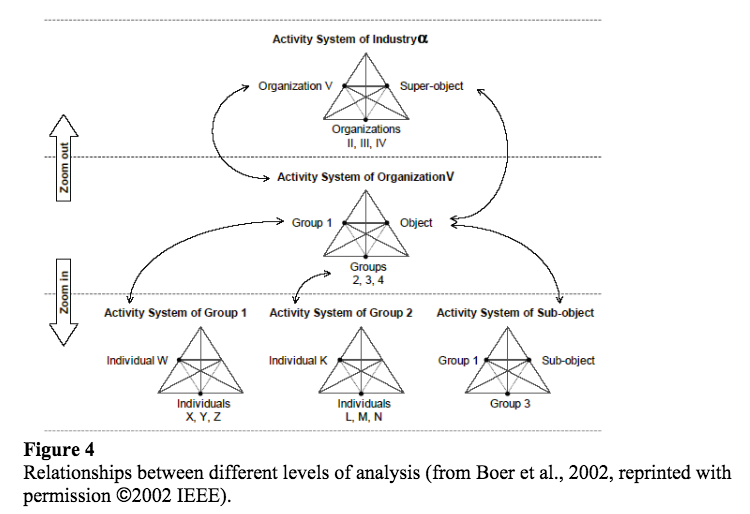NOTE: This annotation is a contemplation/criticism of a particular style of linking and is no way a reflection of my opinion about the author's work and ideas, which I respect greatly.
I was contemplating why the use of links in this paper bothered me so much, and it led to some interesting questions/thoughts.
(I know many others within the hypertext literature community have written about the many (multivariate) semantic functions of links, but I have admittedly yet to read that research, so I apologize if my extemporaneous thoughts on the subject are banal.)
The destinations of most links in this paper (take the whole Abstract for example) are highly ambiguous. As the reader I experience curiosity, yes, but also a certain amount of anxiety about the constant choices I must make and the impossibility of dispelling the unknown. This is made considerably worse on mobile where there is no "hover" state to reveal the destination url. Even on desktop the urls are all routed through researchgate.net and thus require some additional cognitive effort to parse the final destination. Upon exploring some of these links, we find that the type of destination is also highly diverse/multivariate:
- weaving meaning → presentation notes
- Things → blog post
- Personal Knowledge → blog post
- augmenting their tacit awareness → annotation of conference session
- Knowledge Augmentation → academic paper
Thus even after following these links one is not able to derive any meaningful expectations about where the links might lead. There is a double confusion: the initial ambiguity and the { patternlessness / resistance to learning }. In my experience as the reader, and perhaps I am not the only one, I feel anxious, split, and ultimately mired in the heap of heterogeneous connections that I am being presented with. The nature/style of link usage in this paper works against its basic coherency. They land as distractions. Only through an application of will may I forge ahead to read the paper in its (short) entirety.
Perhaps, you might suggest, I am doing it all wrong; I should read the paper through, and then go back to explore connections. Inline/embedded links still represent an improvement over traditional footnotes as I do not have to navigate back and forth between them. Yes, how am I as the reader to resist the tempting azure, the smooth and confident understroke, of the link? It is like going for a hike and suffering either blind adherence to an arbitrary path, haunted by the mystery of untaken side trails, or the aimlessness of tangential indulgence that leaves you a hundred meters from the trailhead.
Context, it must be acknowledged, is important. If this were a piece of literary fiction, the reader may very well have the expectation that their journey will be filled with mysterious choices; all the better, as the choices were designed with one's reading pleasure in mind! There is nothing but the happy exploration of the branching narrative. Yet, this is an academic paper (at least presented as such), and so the reader expects to learning something, to acquire a deeper understanding of a subject, or at least to broaden one's sensemaking horizons. The constant branches might as well be rocks in the path that the reader is constantly tripping over, knowing the trail must offer some glimpses of natural beauty if only they could focus on the journey.
It all begs the question: Who are the links really for? They represent the author's mental model, the author's priorities. It is like being invited to peruse someone's home: "Yes, yes, feel free to look around, as you will!" The reader will no doubt form their own mental model of the disparate data. Yet the stasis of the document resists the reader's creative impulses; it won't move for them. Text will not rearrange, links will not form. That power was granted to the author. Now, the reader clumsily explores the frozen statue of the author's creation.
Let us not fall into the false choice between staid nonambiguity and scattershot freedom. As we turn our awareness inward, we see the richness of consciousness, of feeling, of the interpretative process, of apprehension as it miraculously unfolds. It is structured, it is emotional, and it is limited only by our imagination. Reaching into the depths of our phenomenology provides the basis for a principled and decidedly human topology of hypertext that points the way to truly augmenting human intelligence.
